8 Things To Avoid To Retain Your Car’s Value
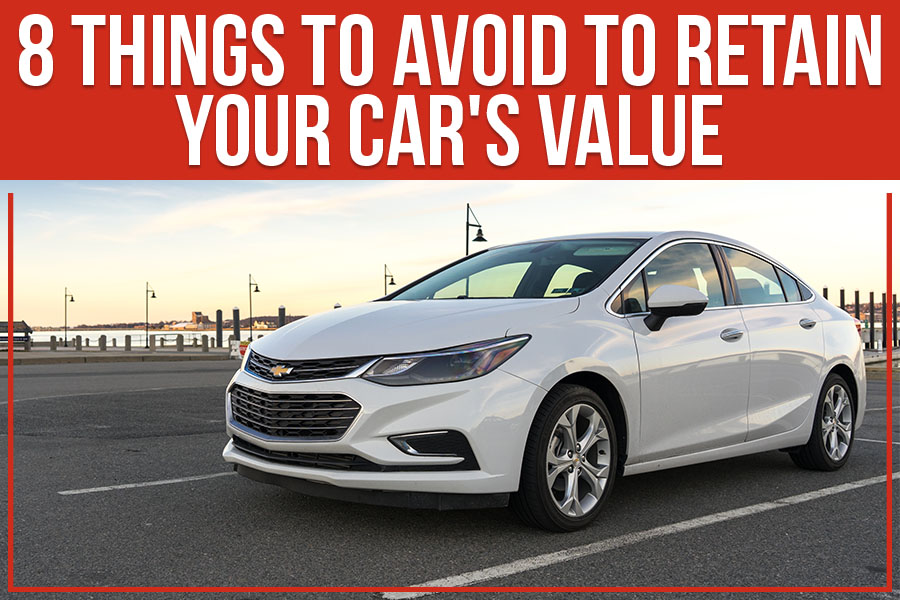
Key Takeaways
- Various factors influence your car’s value when you decide to sell it.
- Most factors are under your control, and proper care ensures your car retains its value when you list it.
- Avoid car maintenance blunders, and ensure you follow the required maintenance protocol to retain its value.
There’s no getting around it – cars are expensive to keep. Not only do you have to factor in the cost of the car itself, but also the vehicle’s depreciation, maintenance, and fuel costs. All of these factors mean that keeping your car in good condition is essential if you want to get as much money back out of it as possible when you sell it. Follow these tips to avoid car devaluation.
1. Not Washing It
Frequent car washing seems like a no-brainer, but you’d be surprised how many people don’t wash their cars regularly. A car that’s covered in dirt, salt, and bird droppings is going to fetch a lot less money than one that is clean and well-maintained. So, make sure to wash your car regularly, both inside and out.
2. Driving It Off-Road
Driving your car off-road is a surefire way to decrease its value. Even driving on a gravel road can cause damage to the car’s underside and be costly to repair. So, unless you’re planning on using your car as an off-road vehicle, it’s best to avoid driving it on anything other than pavement.
3. Getting into Accidents
Getting into an accident is going to decrease the car’s value. But even fender benders can do quite a bit of damage that you must repair before listing the car. So, if you want top dollar for your car, avoid accidents altogether.
4. Parking It Outside
If you don’t have a garage, consider investing in a good quality car cover or tarpaulin to protect your car from the elements. Neglecting this can result in sun damage, rusting, and other problems that will reduce your car’s value.
5. Not Keeping Up with Maintenance
If you want your car to retain its value, you need to keep up with its maintenance. This means getting oil changes on schedule, fixing any issues promptly, and taking good care of them. Neglecting maintenance will cause all sorts of problems down the road that will hurt your car’s value.
6. Customizing It Extensively
While some minor customizations can increase the vehicle’s price, extensive customization is generally something you’ll want to avoid if you’re looking to get top dollar for your ride when the time comes to sell. Too much customization can make your car slightly less marketable, as some prospective buyers may not be as keen on certain mods as others.
7. Letting Pets Ride
Loose pet hair can be tough to remove from upholstery, and certain pets can also cause damage by clawing or scratching the interior. If you have pets, keep them off your vehicle’s seats and ensure they’re securely fastened when riding along.
8. Skimping on Gas
Cheap gas isn’t always worth it in the long run —especially when you could damage your engine due to poor quality gasoline. Save yourself some money by filling up with high-quality gasoline —your automobile and future self will thank you later.
Car ownership is a big responsibility, but it can also be fun. If you take care of your vehicle and follow some simple guidelines, you can enjoy many years of happy motoring—and retain most of your car’s value should you ever decide to sell it down the road.
The Surprising Way Keeping Your Car Clean Helps It Retain Its Value
First impressions are everything during a car sale. If a potential buyer sees a car covered in dirt and grime, they will assume that it hasn’t been well-cared-for and that hidden problems might lurk beneath the surface. On the other hand, if your car is clean and shining, they’ll be more likely to believe that it’s been well-maintained and that any problems it does have will be more easily visible. In short, a clean car is more appealing to buyers than a dirty one.
Another reason keeping your car clean can help retain its value is that it makes it easier to spot any problems that need to be fixed. For example, if you have a small crack in your windshield, it’s much easier to see (and therefore fix) when no dirt and grime are obscuring it. Similarly, any rust spots or other damage will be more visible when your car is clean, which means you can address the issue before it becomes a bigger problem.

Use a Good Paint Protection Product and Keep Up with Regular Maintenance
If you want your ride to look pristine, then you need to invest in a good quality paint protection product. A good paint protection product will protect your car’s paint from scratches and chips and make it appear clean and stain-free.
Regular maintenance is crucial if you want to prolong your car’s life. By investing in regular oil changes, tune-ups, and other preventive maintenance, you can help to avoid costly repairs down the road. In addition, regular maintenance will help to keep your car running smoothly and efficiently.
The Condition of the Car Matters
When selling a used car, the car’s condition is one of the first things potential buyers will look at. If there are any dents, scratches, or other damage, it will decrease the car’s value. This is why it’s crucial to repair any damage before selling your car. Not only does it increase your car’s value, but it also shows potential buyers that you’ve taken good care of it.
You Need to Prove the Car is in Good Condition
In addition to repairing any damage, keeping all documents and receipts related to the car is essential. This includes everything from repair records to registration documents. By doing this, you’ll be able to prove to potential buyers that the car is in good condition. This is especially important if you’re selling a high-end car. Potential buyers will want to see that you’ve kept up with all maintenance and repairs. If you don’t have records, they may not be willing to pay as much for the car.
Also, Read – Leasing or Financing a New Car – What’s Better?
Maintaining your car through regular service is the best way to ensure its value stays high. Feldman Chevrolet of Lansing, serving Fowlerville, MI, has a team of experts dedicated to keeping your car running like new. We offer competitive prices on our services, and we work swiftly so that you can get back on the road as soon as possible. Make an appointment today, and let us show you what we can do to help you retain your car’s value for years to come.
Is It Wise To Lease Or Finance A New Car?
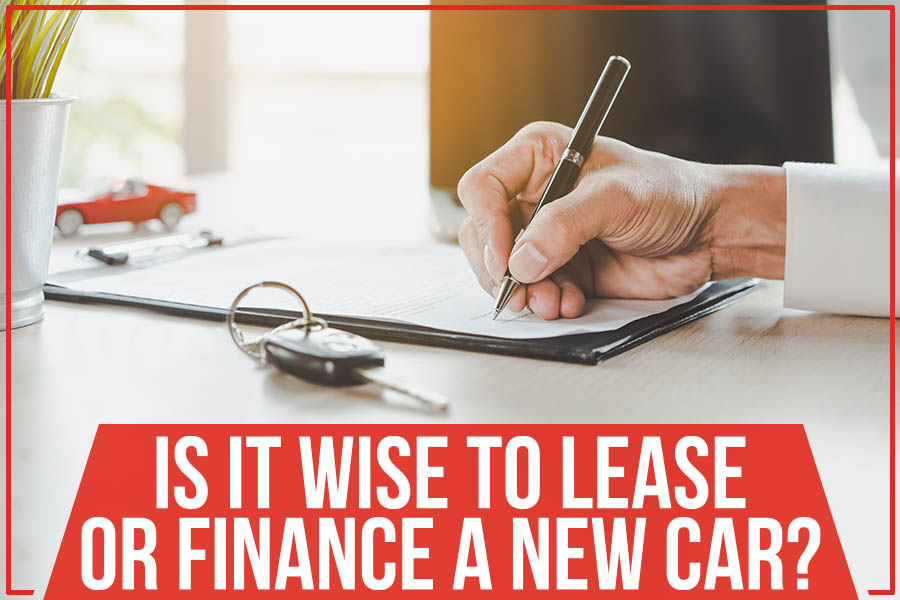
Key takeaways:
- Financing a car has some definite benefits – you own it when all is said and done and can build equity in it as you make payments.
- On the other hand, leasing can be a great option for those who want lower monthly payments and don’t mind returning the car at the end of the lease term.
- Research before leasing or Financing to get the best deal possible.
- Feldman Chevrolet of Lansing is a great place to finance your next car. We have a team of finance specialists who will work with you to get the best deal possible.
After selecting the best Chevrolet model, one of the biggest decisions you must make is whether to lease or finance it. Leasing a car has become increasingly popular recently, but is it always the best option? In this blog post, Feldman Chevrolet of Lansing will discuss the pros and cons of leasing and financing a car so that you can make a knowledgeable decision.
What Is Leasing?
During the lease period, you pay monthly payments, and at the end of it, you have the option to buy the automobile outright or return it to the dealership or the person who leased it to you.
The Upsides Of Leasing:
Lower monthly costs:
The monthly cost of car leasing is less than buying it outright because it is practically renting for a predetermined period, usually 36 months. However, there are options for different loan lengths.
When compared to financing the car’s total price, this usually results in a driver getting a higher-end vehicle for the same money. When the lease ends, the car will either be sold to repay the remaining cost for the lessor or offered to the lessees for purchase.
Warranty coverage:
Since most new cars come with at least three years of bumper-to-bumper warranty coverage, leasing a car should be hassle-free and seldom result in unexpected costs. When it’s time to relocate, there’s no need to haggle with private sellers or list the vehicle on your own.
Change cars according to your need:
Leasing a car means having a new vehicle with the newest features and styling every two or three years. Customers that want a temporary transportation option could find this suitable. For instance, a minivan could match a family’s needs while the children still use strollers and car seats. However, a stylish sedan or an SUV with stronger off-road capabilities might be a better fit after they are no longer necessary.
Down payment:
Lessees are responsible for paying taxes and registering their new vehicle, like auto buyers; however, the tax rate will vary by state. While some jurisdictions may tax down payments, most states apply sales tax to the depreciated value of the leased car.
The Downsides Of Leasing:
Short-term ownership:
Leasing a car means you’re never really the owner. In a sense, you are renting it from the dealership for a specified time. This can be seen as a con because after making all your payments, and you don’t get to keep the car.
Mileage restrictions:
Finance firms generally restrict the mileage of leased automobiles to maintain the value of their cars and keep expenses down.
Every additional mile beyond the agreed-upon amount—typically 10,000 miles—will increase your total cost. Drivers with long commutes or who frequently participate in carpools may want to think about purchasing rather than leasing because leases with 12,000 to 15,000 miles are available but will raise the monthly price. If you exceed the limit, a move or a change in commute conditions may result in high costs at the end of the lease.
Have to keep the car in good condition:
Another unanticipated cost that frequently catches drivers off guard is wear and tear. Keep your leased car in excellent condition since you might be penalized for dents, paint scratches, or inside stains. Customizations, popular among off-road and performance enthusiasts, are also prohibited since many lease agreements call for them to be taken off before the lease is due to be returned.
What Is Financing?
When a buyer gets an automobile through financing, they obtain a loan from a bank or another creditor that will last for a specific amount of time and demand regular payments that cover both the principal (the amount they owe on the car) and interest. The creditworthiness of the buyer often determines the interest rate.
Used cars and CPOs prices are now at historical highs, which helps balance some of the high pricing in 2022.
The upsides of financing:
You own the car:
Once the last payment is made, the car belongs to you. You can drive it as long as you’d like, sell it or trade it in without worrying about penalties.
Freedom to customize:
Freedom is the next advantage of owning an automobile. When you purchase a car, you have complete freedom to customize it in any way you want, travel as many miles as you want, and maintain it however you see fit. In contrast to a lease, you are not required to return the vehicle to the seller and are not liable for mileage or wear and tear-related fees.
Build equity:
Every month, a portion of your payment goes toward the principal balance of the loan, which means you own a little more of the car each time. When you have a lease, you never build any equity in the car.
Help you rebuild your credit score:
If you make all your loan or interest payments on time and keep the car until the loan is paid off, you’ll have helped rebuild your credit score. On the other hand, leasing a car impacts your credit score since you never own the car.
The Downside Of Financing:
Higher monthly payments:
Since you’re paying the complete cost of the car, your monthly payments will be higher than if you were leasing.
Risk of negative equity:
If you choose to sell or trade-in your car before the loan is paid off, you might owe more money and interest than the car is worth. This is also known as being “underwater” or “upside down” on your loan.
Depreciation:
What goes up will someday come down – and that’s true for the value of your car, too.
Once you drive a new car off the lot, it can depreciate by as much as 20% in the first year alone. So if you finance a $30,000 car, it could be worth only $24,000 12 months later.
Maintenance:
With a leased car, you’re only responsible for maintaining routine maintenance, like oil changes and tire rotations. But if you own your car, you’ll be on the hook for all repairs – big and small. That means you could face a hefty repair bill if something major goes wrong, like an engine or transmission issue.
Bottom line:
What’s best for you? Leasing or financing your next car? It depends on your needs and taste. But whichever approach you take, be sure to do your research so you can get the best deal possible.
To finance your next Chevrolet model, visit Feldman Chevrolet of Lansing, serving Battle Creek, MI. Our finance team specialist will be happy to walk you through the stages.
The Difference Between Antifreeze And Coolant
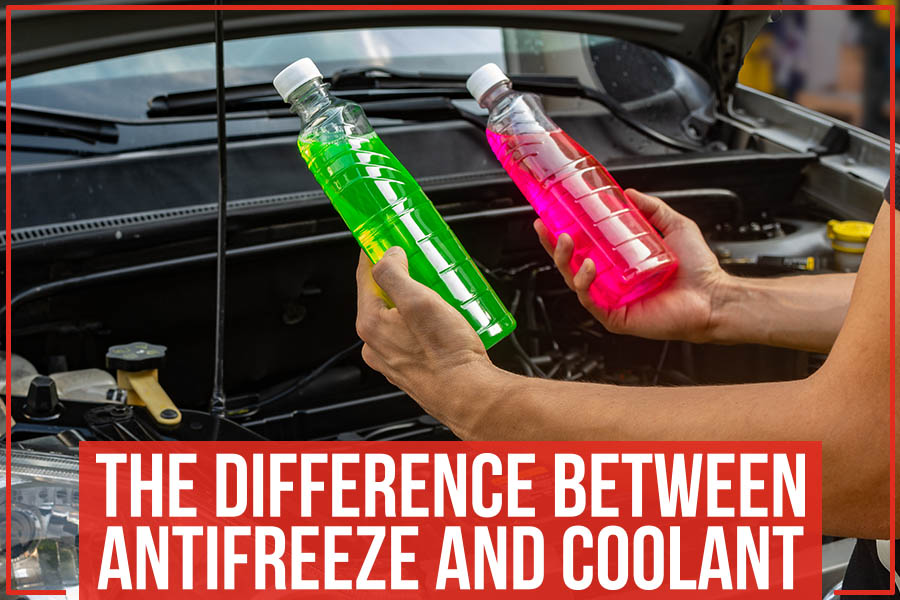
Key Takeaways:
- Coolant helps prevent your engine from overheating.
- Antifreeze keeps the coolant from freezing within the radiator coils in cold weather.
- An overheating car indicates a possible need to change coolant.
- Both antifreeze and coolant contain glycol, which helps prevent corrosion.
- Antifreeze has a higher boiling point than the coolant and helps prevent freezing.
- Always use a 50/50 mixture of antifreeze and water.
- You can go longer between changes with OAT coolant.
- OAT coolants are the more popular choice in recent years.
Many car owners don’t know the difference between antifreeze and coolant when maintaining vehicles. Antifreeze is a chemical or ethylene glycol-based liquid used in cars to prevent the water in the radiator coils from freezing during winter. Coolant, on the other hand, is a mixture of water and antifreeze that keeps the engine from overheating. Let’s take a closer look now.
How Does Antifreeze / Coolant Work?
Your car’s engine produces much heat when it is running. To keep the engine from overheating, a coolant is circulated through it. The coolant absorbs the heat and then carries it away from the engine to be cooled off. The coolant is kept in a reservoir usually located under the car’s hood. When the engine is turned off, the coolant stops circulating and starts to cool down. Most antifreeze types also contain corrosion inhibitors to protect the engine from rust and other forms of corrosion.
What to Know About Engine Coolant?
Engine coolant is a combination of water and antifreeze that helps keep your car’s engine from overheating. The radiator in your car circulates the coolant through the engine to help keep it at a consistent temperature. If your city experiences extreme temperatures, it’s necessary to ensure that your car’s coolant can withstand the heat. You can buy coolant that is already mixed or mix it yourself. The ratio of water to antifreeze in the coolant should be 50/50. This ratio can vary depending on the climate you live in.
Can You Use Coolant in Very Cold Winters and Very Hot Summers?
If your city experiences very cold winters, use a coolant with a low freezing point. This will help keep your car’s engine from freezing. Antifreeze is a chemical that lowers the freezing point of water, so it’s added to the coolant to help prevent the water from freezing.
Use a coolant with a high boiling point if your area gets very hot summers. This will help keep your car’s engine from overheating. Coolant boils at a lower temperature than water, so it helps keep the engine cool.
When Should You Use Antifreeze?
Use antifreeze in the winter to keep your car’s engine from freezing. It is typically added to the coolant reservoir when the weather gets cold. You can find antifreeze at auto parts stores. Be sure to check what type of antifreeze your car needs before you buy it.
If your car’s engine is running hot, you may need to add antifreeze. Check the level in the reservoir and add more if needed. Be sure to bleed the air out of the cooling system if you add more coolant. The radiator should be two-thirds full.
Why are You Losing Coolant Frequently?
One possibility is a leak in the radiator or one of the hoses. Another possibility is that the water pump isn’t circulating the coolant properly. Suppose you’re losing coolant and don’t know why; take your car to a mechanic and have it checked out. In the meantime, check the coolant level in the radiator frequently and add more if necessary.
What to Do When Your Coolant Level is Low?
If your car’s coolant is low, you will need to add more. You can see the coolant reservoir under the hood of your car. It will have a fill line that indicates how much coolant your car needs. Be sure not to overfill it. Once you’ve added the coolant, replace the cap and screw it on tightly. It’s imperative to check your car’s coolant level regularly. If you notice that it is low, add more as soon as possible. Allowing your car to run low on coolant can cause serious damage to the engine.
Complete Coolant Replacement – When to do it?
It’s important to know when to do a complete coolant replacement. Depending on your vehicle type, change the coolant every two years or 30,000 miles, whichever comes first. Antifreeze can last much longer, but it’s a good idea to replace it every five years or 100,000 miles to be safe. However, check your owner’s manual to be sure. If you don’t replace the coolant in your car, it can become contaminated and no longer effective.
Suppose your car is overheating more often than usual or the temperature gauge is reading higher than normal. In that case, it could indicate that it’s time for a coolant flush. Other signs include rusty-colored coolant, sweet-smelling coolant, or low coolant levels.
Is Coolant Also Known as Radiator Fluid?
Yes, coolant is also known as radiator fluid. It is circulated through the engine and absorbs heat residual heat for dissipation. It then carries this heat to the radiator, which is discharged into the air.
Check out our blog to discover how to find out if your radiator is going bad.
What’s the Difference Between IAT and OAT Antifreeze?
There are two types of coolant used in vehicles, IAT and OAT. IAT, or Inorganic Additive Technology, has been around the longest. It’s a mixture of water and silicate, with other additives to help protect against corrosion. OAT, or Organic Acid Technology, is newer and uses different ingredients to achieve the same goal.
The main difference between IAT and OAT is how they protect against corrosion. IAT creates a barrier between metal surfaces, while OAT changes the pH of the coolant to make it more acidic. This acidity helps prevent corrosion from occurring in the first place.
OAT coolants also have a longer lifespan than IAT coolants. This is because the organic acids in OAT coolants don’t break down as quickly as the silicates in IAT coolants. It means you can go longer between changes with OAT coolant, which is why it’s become the more popular choice in recent years.
If you seek professional car services, Feldman Chevrolet of Lansing, serving Grand Rapids, MI, is your ideal Chevrolet service center. We offer numerous top-notch car services to keep your car running smoothly. From oil changes and tire rotations to brake repairs and engine diagnostics, we have the expertise to get the job done right. We offer competitive pricing on car services. So, if you seek quality car care at an affordable price, look no further than us!
Certified Pre-Owned Cars – A Car Worth Buying?
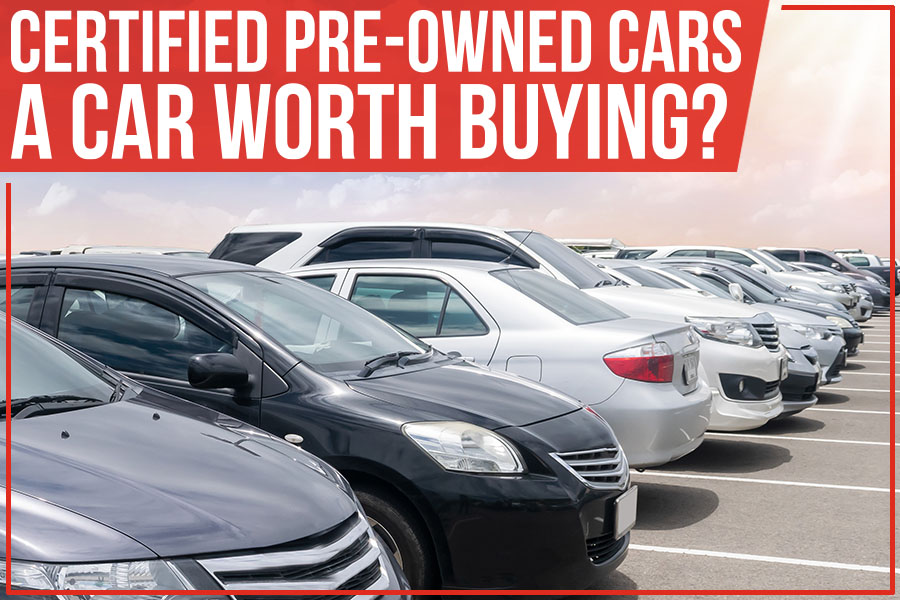
So, you’re in the market for a new car. You’ve read up on your options and are considering buying a certified pre-owned (CPO) car. But is it worth the extra money? This article will examine what CPO cars are all about and whether they’re worth the extra cost. Stay tuned!
What Does a CPO Mean? –
The manufacturer inspects CPO cars and must meet specific criteria before certification. This usually includes a thorough inspection, reconditioning, and an extended warranty. Certified pre-owned cars are typically late-model vehicles that have low mileage.
Should First-Time Buyers Purchase a CPO? –
Buying a CPO car helps first-time buyers balance the benefits of a new and pre-owned vehicle. Users enjoy the exclusivity of a brand-new ride at a price tag that doesn’t break the bank. Certified pre-owned cars are also low-risk because of their extended warranties.
Downsides of Buying a CPO Car? –
The most significant disadvantage of certified pre-owned cars is that they can be pricey. Although certified pre-owned cars cost less than a new vehicle, they’re still more expensive than your average used car. In addition, certified pre-owned cars may have higher interest rates and monthly payments.
What Are the Benefits that Make CPO Vehicles Worth It? –
- Warranties –
The first benefit of certified pre-owned cars is that they come with extended warranties. Most certified pre-owned programs offer bumper-to-bumper or powertrain coverage for a particular period/mileage. This means that if something goes wrong with your car, you’re covered.
- Inspection –
Certified pre-owned vehicles must undergo a rigorous inspection before entering the market. The inspection process includes a multi-point inspection of the car’s interior, exterior, and under the hood. Certified pre-owned cars are also required to have a clean title history. This means the car hasn’t been in significant accidents or is well-maintained.
- Easy to Insure –
The rigorous inspection process and the exclusive certification mean insurance companies do not think twice before insuring a CPO car. Insurance companies will offer lower rates for certified pre-owned cars because they view them as low-risk vehicles.
- Depreciation –
A certified pre-owned car has already taken its biggest hit in depreciation. The car’s first owner experiences the initial drop in value when they drive the car off the lot. When a certified pre-owned car hits the market, it has already lost a significant chunk of its value.
- Better Financing –
CPO cars come with better low-interest rate financing. The certified pre-owned program was designed to give buyers an alternative to new cars, which is why most CPO cars often come with great financing deals that make them even more affordable.
So, are certified pre-owned cars worth it? The answer is a resounding yes. Certified pre-owned cars offer the peace of mind of a new car warranty and the affordability of a used car.
Feldman Chevrolet of Lansing, serving Charlotte, MI, has an inventory of certified pre-owned cars that will fit your needs and budget.
Browse our CPO inventory, and get your hands on a new ride in a smooth, hassle-free process!
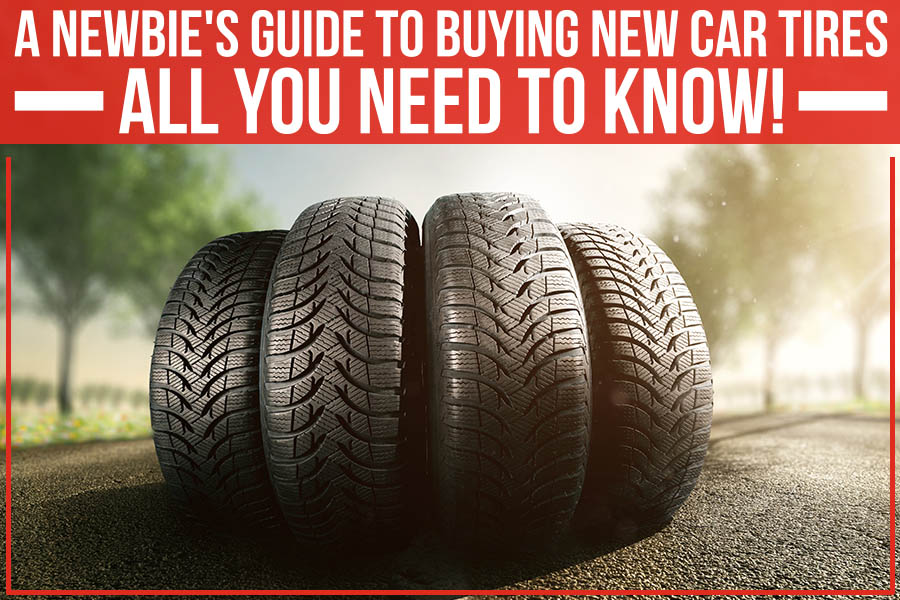
When buying new tires, it can be difficult to determine what tire is best for your car. With such a wide variety of tires, it’s hard to know which one will give you the best performance and longevity.
In this article, Feldman Chevrolet of Lansing, serving Mason, MI, will walk you through everything you need to know about replacing your car’s tires. We’ll go over the many types of tires available and assist you in determining which is best for your needs. So, keep reading!
Factors To Consider When Buying New Tires
1. Terrain Type:
The first step is to consider the terrain you’ll be driving on most before buying new tires. If you live in a location that has a lot of snow and ice, you’ll need tires that provide excellent grip in these situations. All-terrain tires are an excellent choice for drivers who want to be prepared for any condition or terrain.
2. Vehicle Size and Weight:
Another thing to consider is the size and weight of your car. Larger vehicles require tires that support their extra weight, but smaller automobiles may get by with less robust treads. You’ll also want to ensure that your new tires suit your vehicle.
3. Driving Habits:
Do you tend to drive fast? Do you take a lot of sharp turns? If so, you’ll want a tire that can handle these conditions. Sports cars need tires that can provide good grip and traction. On the other hand, if you often drive on highways or smooth roads, you won’t need tires that are quite as robust.
4. Budget:
Of course, your budget is one of the most important factors to consider. Tires can range in price from a few hundred dollars to over a thousand. Finding tires that fit your driving needs and your budget is important.
Different Types Of Tires For Your Car
1. All-Season Tires:
All-season tires are an excellent choice for most drivers. So if you currently reside in a place with mild winters, all-season rubber will handle the conditions well enough to get where you need to go safely and on time!
2. Summer Tires:
Summer tires are specially designed for warm weather driving. They typically have shallower treads than all-season or winter tires, which helps improve traction on dry roads. Summer tires might not be the best choice for those living in areas that experience harsh winters.
3. Winter Tires:
Winter tires are built for driving on snowy and icy roads. They have deeper treads than all-season or summer tires, allowing them to grip better on ice. Winter tires may not function as well in the heat because of this.
4. All-Terrain Tires:
All-terrain tires are designed to function on a wide range of terrain, including dirt roads, gravel roads, and muck. They have deeper treads than all-season or summer tires and aid in the traction of off-road surfaces. If you reside in an area with mostly paved streets, all-terrain tires may not work as well as other types.
Feldman Chevrolet of Lansing, serving Mason, MI, has everything you need to know if you’re in the market for a new set of tires for your car. We’ve developed this basic guide to help make the process as smooth and stress-free as possible.
Plus, we offer excellent Chevrolet service near Mason, MI, so you can get your new tires installed quickly and properly.
Schedule a test drive today, and find the perfect set of wheels fit for your needs!
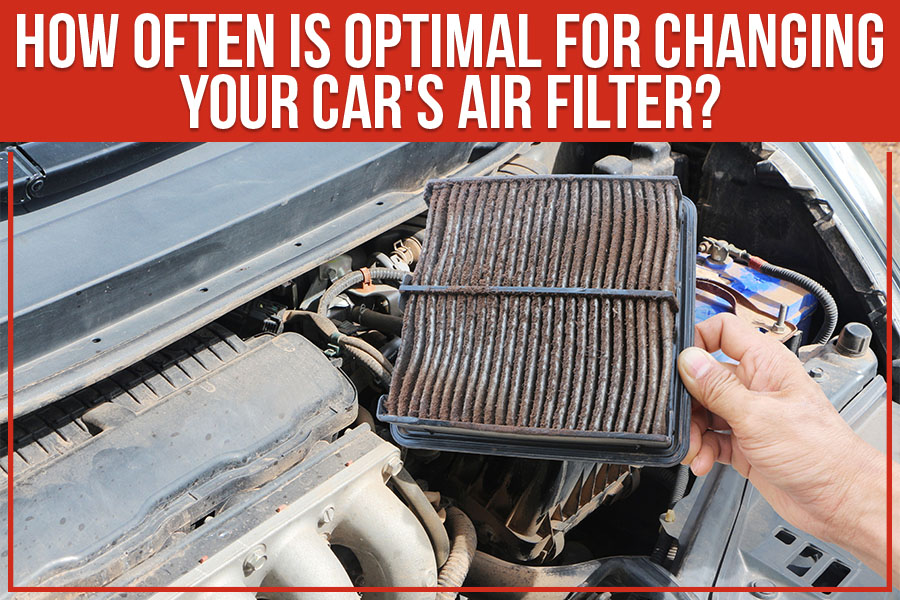
Summer is a time when folks tend to drive more. Whether you’re taking road trips or running errands, the increased time spent in the car means that both your cabin & engine air filter is working harder than usual. So, should you replace your air filter more often during the summer?
The answer relies on a few factors, but generally, it’s a good idea to change your air filter more frequently during the summer months. Let the experts from Feldman Chevrolet of Lansing explain why.
Reason 1 – More Pollution in The Air
One of the main reasons to change your cabin air filter more often during the summer is because there is simply more pollution in the air. This can be due to various factors, including increased car traffic, emissions, and wildfires. All this extra pollution means your air filter works overtime to keep your cabin air clean.
Reason 2 – More Dust
Another reason to change your air filter more often during the summer is that there is typically more dust in the air. This can be attributed to many things, from construction projects to dry weather conditions. Regardless of the cause, all that extra dust will quickly clog up your air filter, making it less effective at doing its job.
Reason 3 – Allergies
If you suffer from common seasonal allergies, you know that summer can be a tough time. Unfortunately, it’s not just the pollen in the air that can trigger your allergies – it’s also the dust & other particles floating around. A clogged cabin air filter will do nothing to help keep these allergens out of your car’s cockpit, so it’s important to change it frequently during the summer months.
Reason 4 – A/C Issues
Your car’s AC relies on a healthy air filter to function properly. If it’s clogged, it can restrict airflow to the A/C unit, making it less effective at cooling your cabin. In extreme cases, a faulty air filter can easily cause your A/C unit to fail entirely. So, if you want to stay cool and comfortable during the summer, ensure your air filter is clean.
Reason 5 – Engine Issues
Just like the cabin has an air filter, so does the engine, and it’s responsible for ensuring the air entering the engine is free of pollutants or airborne debris.
The engine depends on a steady supply of clean air to function properly, and a clogged air filter can restrict airflow to the whole engine – drastically affecting the car’s performance.
This can lead to several issues, including decreased fuel efficiency, power loss, and engine damage. So, if you’d like to keep your ride running smoothly, change your engine air filter regularly – especially during the summer.
Keep Your Car in Tip Top Condition with Feldman Chevrolet of Lansing
Feldman Chevrolet of Lansing, serving Grand Ledge, MI, is your source for all things Chevrolet. If your car’s cabin or engine air filter needs to be changed, we can take care of that for you.
We also offer diverse other services to keep your car running smoothly, including oil changes, tire rotations, and brake service.
Schedule an appointment with us today, and we’ll make sure your car is ready to take on the summer heat!
Driving In Heavy Rain – 8 Tips For Safe Driving
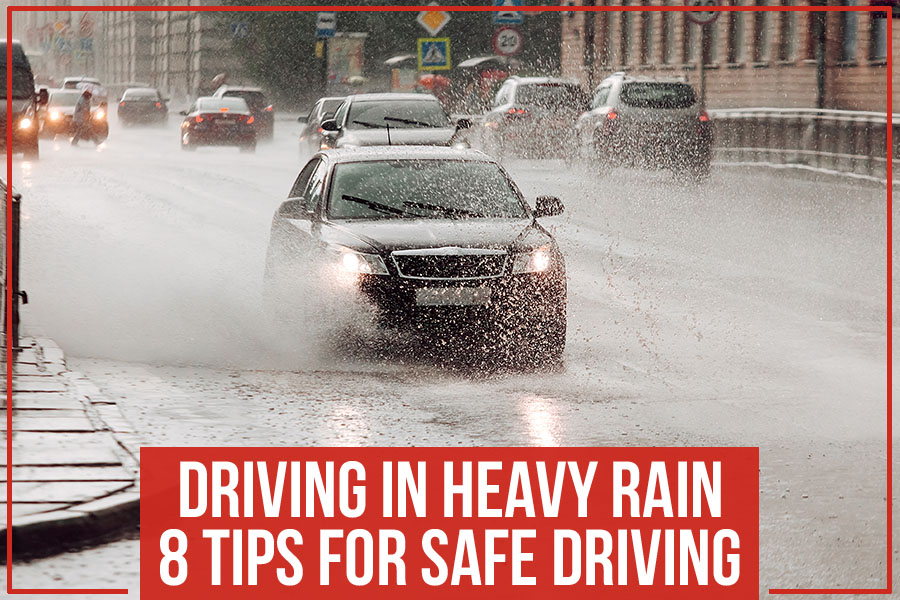
Before heading out on the road during inclement weather, brush up on these crucial tips. From avoiding hydroplaning to dealing with wind and visibility issues, we’ve got you covered. So read on and stay safe during those slippery winter months!
1) Check Your Windshield Wipers
Windshield wipers not working during rain is a recipe for disaster. Before driving in heavy rain, check to ensure your windshield wipers are in good working order. This sounds straightforward, but you’d be surprised how many people take their windshield wipers for granted until they find themselves driving in heavy rain.
2) Slow Down
The first rule of driving in heavy rain is to take it slow. Wet roads mean decreased traction and increased stopping distances, so giving yourself plenty of time to react is essential. Accelerate and brake slowly, and always maintain a safe following distance.
3) Know How to Deal with Hydroplaning
Hydroplaning occurs when your car’s tires lose contact with the road due to standing water. Hydroplaning is a scary experience, but you can take different steps to avoid it. These include driving slowly, avoiding puddles, and keeping your tires properly inflated.
4) Use Your Lights
Using your headlights (and fog lights, if you have them) is a must in heavy rain. Not only will they help you see the road better, but they’ll also make it easier for other drivers to spot you.
5) Be Aware of Flooded Roads
Flooded roads can be hazardous, and driving through them is never worth the risk. If you come across a flooded street, turn around and find an alternate route.
6) Know When to Pull Over
There will be times when driving in heavy rain is too dangerous. If visibility is low or the conditions are otherwise too hazardous to continue, find a safe place to pull over and wait out the storm.
7) Watch Out for Debris on the Road
Wind and rain cause all sorts of debris accumulation on the road. From fallen tree branches to trash cans, you need to look for anything that could damage your car or cause an accident.
8) Schedule Precautionary Car Maintenance Session Post Rain Drive
While we advise against going out in stormy weather conditions, if you do need your car for an emergency during a storm, don’t forget to schedule a repair session later. Driving in heavy rain can take a toll on your vehicle. To keep it running smoothly, it’s important to schedule regular maintenance check-ups. This is especially important if you live in an area that experiences severe weather conditions often.
Driving in the rain can be a challenge. The roads are slick, visibility is poor, and it’s easy to hydroplane. Feldman Chevrolet of Lansing, serving Dewitt, MI, recommends scheduling a car maintenance and repair session as soon as possible post-rain drive. We offer comprehensive car maintenance and repair services that will have you back on the road in no time. Schedule a service with us today!
5 Warning Signs That Your Radiator Is Going Bad
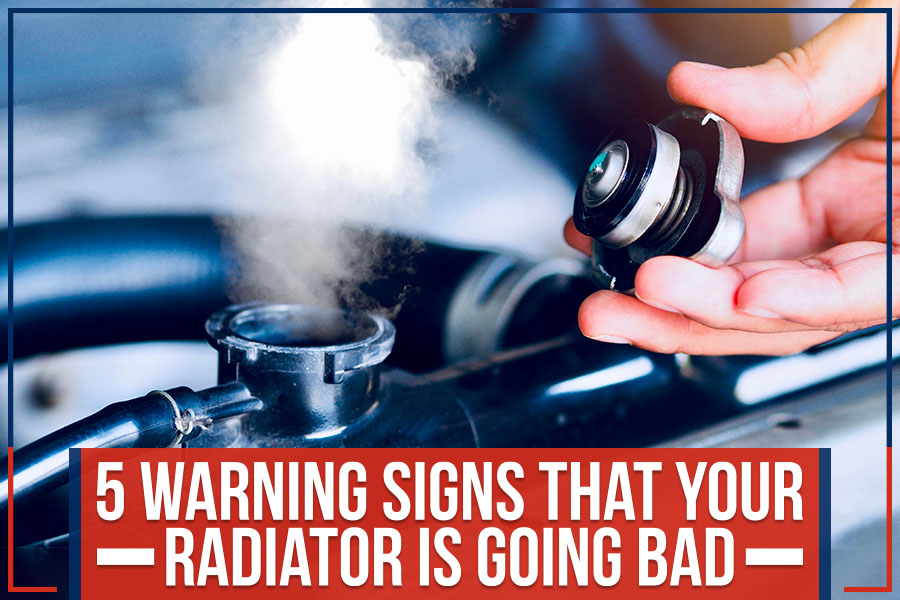
When it comes to your car, it’s essential to stay ahead of any potential problems. One such issue that can sneak up on you is a radiator repair. If you’re not sure about how a faulty radiator ought to operate, read on for a few essential hints.
Luckily, most of these signs are easy to spot, so you can address the problem before it becomes more costly. Watch out for leaks, strange noises, and overheating – and remember, if in doubt, always consult with a professional!
What Does an Automobile Radiator Do?
An automobile radiator has a few key jobs. It helps keep the car engine coolant at the right temperature, prevents overheating, and protects your car from corrosion.
If there’s a problem with your automobile radiator, it can cause severe issues for your car engine. That’s why you must be aware of the warning signs that your car needs a radiator repair.
Warning Signs It’s Time for a Radiator Repair
1. Car Coolant Leak:
Car coolant is a liquid that circulates through your car engine to keep it from overheating. Suppose you notice a puddle of bright green or orange juice beneath your car. In that case, it’s likely coolant and an indication that there’s a leak in your radiator. Car coolant can leak from several places, including the radiator cap, hoses, and engine gasket.
2. Overheating Car Engine:
Your car engine performs optimally between 195- and 220-degrees Fahrenheit. If your car’s temperature gauge needle starts creeping into the red zone, it means your engine is overheating. A few reasons could cause overheating, but a car coolant leak is one significant possibility. Plus, if your automobile radiator is clogged by rust or debris, it won’t be able to properly cool your engine.
3. Coolant Discoloration:
Your car engine coolant passes through the engine and radiator countless times to keep your car engine at the ideal temperature. Over time, the coolant will start to change color from its original green hue to either brown or yellow. It is an indication that there’s rust in your system, which means it’s time for a radiator flush. The car engine coolant may also become more viscous or thicker, making it more difficult for the coolant to do its job correctly.
4. Dirty Radiator Fins:
Like your car’s engine, your automobile radiator has several components. Each serves an essential purpose in keeping your car engine cool. The radiator fins are thin metal pieces that help to dissipate the heat from the fluid inside the radiator. When these fins become covered in dirt and debris, heat is more difficult to escape, leading to engine overheating. The fins may also get damaged due to impact, causing them to bend and become less effective.
5. Radiator Hoses:
The radiator hoses are responsible for carrying the hot coolant from the engine to the radiator and then back again. Over time, these lines & hoses can become brittle and cracked, which can cause a car coolant leak. In extreme cases, the hose may rupture, causing a complete loss of car engine coolant and resulting in engine failure. You can inspect your radiator hoses regularly for signs of wear and tear, such as cracks, leaks, or bulges.
Conclusion:
Regular automobile radiator maintenance is crucial to keeping your car running correctly. Be sure to keep an eye out for any of the above warning signs, and bring your vehicle to Feldman Chevrolet of Lansing, offering the best radiator repair in Charlotte, MI, at the first sign of trouble.
Our expert technicians will be able to quickly diagnose the problem and get your car back on the road in no time.
8 Signs That It’s Time For A New Automobile
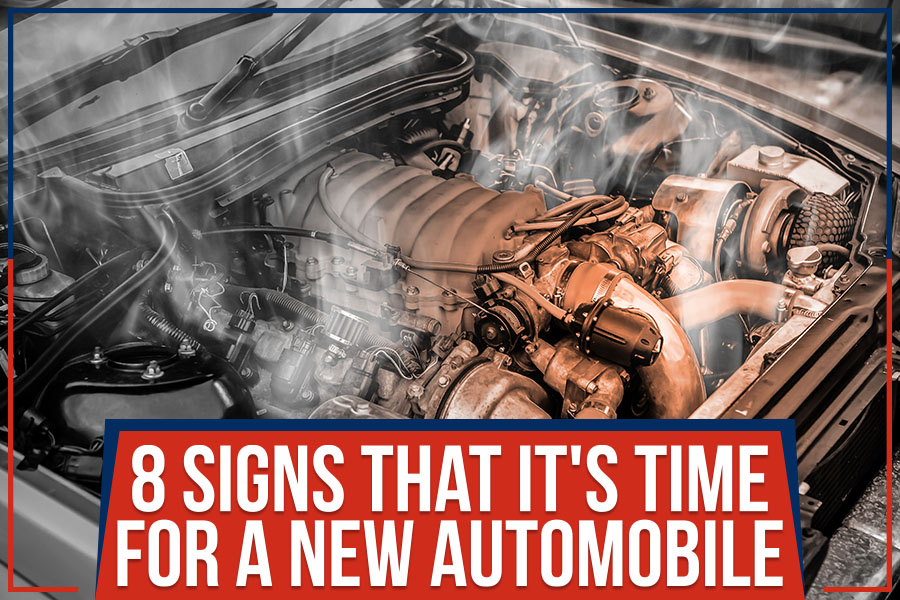
Like most drivers, you don’t think about getting a new car until one of two things happens: either your current vehicle finally dies, or you hit that magical threshold where it makes more financial sense to snag up a new one than to keep repairing the old one. But what are the signs that it’s time for a new automobile? Here are eight signs by Feldman Chevrolet of Lansing that it might be time to consider trading in your old set of wheels.
Why Buying a New Car Necessary?
Well, the answer is simple. You might get a new car for different reasons, but the most popular one is that your old car isn’t performing the way it used to. It has reached a point where the repair costs start to outweigh the cost of a new car itself.
Signs Y’all Need to Look For!
- The Cost of Maintenance and Auto Repairs is More Than the Car is Worth: If your car’s blue book value is less than the amount you’re shelling out to keep it running, it might be time for an upgrade.
- You Keep Refuelling It: It might be time for a change if you feel like you’re constantly at the gas station. A newer car will likely have better fuel efficiency, meaning you’ll save money in the long run.
- You’re Constantly Making Payments: If you’ve been making payments on your car for several years and still owe a significant amount, it might be time to trade up to a newer model.
- Your Car No Longer Meets Your Needs: Perhaps you’ve started a family since you bought your car, and now you need something larger. Or maybe you’ve downsized and don’t need as much space. If your ride no longer meets your needs, it might be time to upgrade.
- You’re Ready for Something New: Sometimes, you just need a change. If you’re bored with your current ride or are ready for something new, it might be time to buy a new car.
- You’re Getting Pulled Over… A Lot: If you find yourself getting pulled over more often than usual, it might be time to buy a new car. This is especially true if you’re getting pulled over for driving an older car that doesn’t have the latest safety features.
- It’s Isn’t as Fun to Drive as it Used to Be: If you’re not enjoying driving your car as much as you used to, it might be time for an upgrade. A new car can give you the same feeling you had when you first drove your current car.
- Your Commute is Getting Longer: If you’re driving an older car, you might not be able to handle a longer commute. A new car can provide the latest technology to make your commute more bearable.
Chevrolet of Lansing Can Help You!
Chevrolet of Lansing, serving Mason, MI, is your one-stop shop for all things Chevrolet. We have a huge selection of new and used cars, trucks, and SUVs. We also offer financing, service, and parts. Visit us today or give us a call to learn more about our inventory or to schedule a test drive.

There’s no doubt that private transport is the most popular way to get around. With cars and motorcycles, you have the freedom to go where you want, when you want. But is it the best way?
With authorities finally paying more attention to the environment and pollution caused by private cars, should people switch to public transport? The answer can be confusing.
Read this blog post of experts from Feldman Chevrolet of Lansing, an authorized Chevrolet dealership and service center. So, which is the best way to get around? Let’s take a closer look at public and private transport and see what makes the most sense for you.
Public Transport
Pros
There are many reasons to use public transport. It’s often the most economical way to travel, especially if you live in a big city with an extensive public transport system. You can save some dollars on gasoline, parking, and car maintenance by taking the bus or train instead of driving your car.
Public transport is also generally more environmentally friendly than private cars. Buses and trains emit fewer greenhouse gases and other pollutants than cars, so they help to reduce air pollution.
Another boon of public transport is that it can be faster than driving, sometimes, especially during rush hour when traffic is congested. And if you take the bus or train instead of driving, you can use that time to relax or read a book.
Cons
There are some disadvantages of public transport as well. It can be less convenient than driving your car, especially if you have to transfer between different modes of transport (for example, from the bus to the train) or if you need to travel at an unusual time. Public transport can also be more expensive than your car, depending on the city and transportation system.
Private Cars
Pros
Private cars have many advantages over public transport. They are usually more comfortable since you can control the temperature and music and don’t have to share with strangers. You can also usually get where you’re going faster in a car since you don’t have to make any stops along the way or transfer between different modes of transport.
It offers more privacy and is more secure for passengers as pickpocketing incidences are more common in public transport.
Cons
There are some disadvantages to private cars as well. They can be expensive to buy and maintain and produce emissions that damage the environment. In some cities, parking can be challenging to find and expensive, which makes driving less convenient.
Which Is The Best Way?
So, what’s the best way to get around? It depends on your individual needs and circumstances. Public transport is a good option if you want to save money or help the environment.
If you value privacy and flexibility, then a private car might be the best choice. Observing the perks and value, we recommend you travel by private car. People should have one in case of emergency as it offers flexibility.
Are you looking for a Chevrolet in Grand Ledge? Visit Feldman Chevrolet of Lansing, serving Grand Ledge, MI. We offer some fantastic rates on new and used Chevrolet cars.





